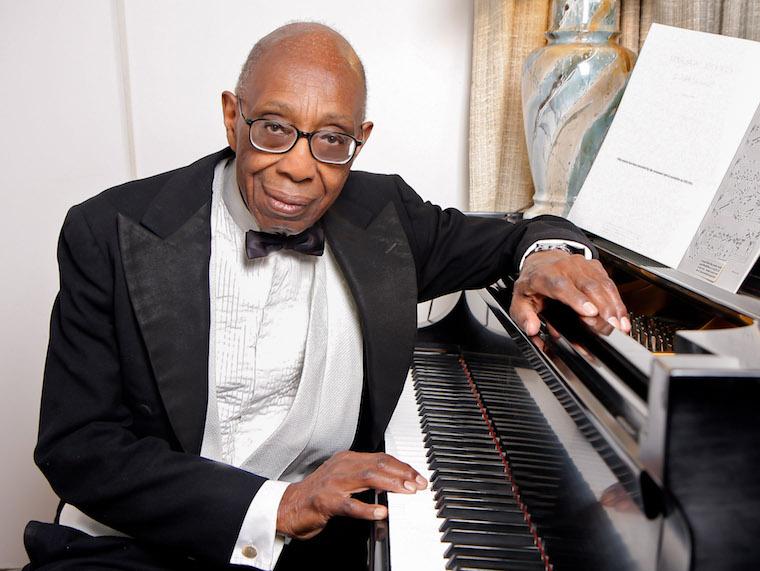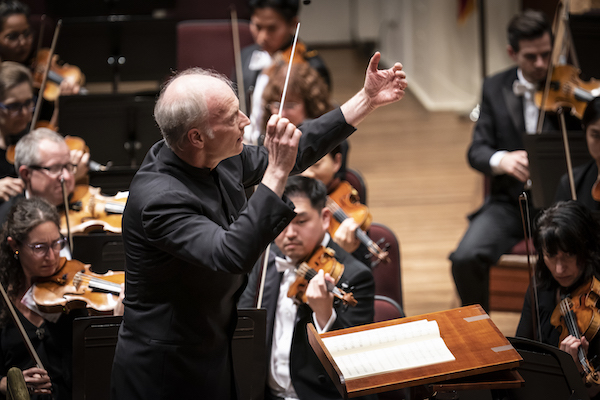Walker’s Second pairs well with Beethoven’s in NSO series

George Walker’s Sinfonia No. 2 was performed by the National Symphony Orchestra Wednesday night. Photo: Oberlin College
The National Symphony Orchestra has reached the penultimate program of its cycle combining the symphonies of Ludwig van Beethoven and African-American composers. On Wednesday night Gianandrea Noseda led performances of the Second Symphonies of Beethoven and George Walker. Each was introduced by a slender Beethoven overture.
The surprise star of the evening was Walker’s Sinfonia No. 2, and not only because of its larger, more lush orchestration. The Koussevitzky Foundation at the Library of Congress commissioned the work in 1988, and the composer’s holograph score written in pencil remains in that institution’s collection. The first movement felt akin to other Walker symphonies, with intense, somewhat jagged unison lines overlapping with dissonant countermelodies.
The middle section of this movement turned more tranquil, with shimmering themes in the violins accompanied by cello pizzicati and harp twangs. A brass-powered crescendo swell brought the score back to the clashing style of the opening before the movement ended on a glistening soft chord.
The later movements offered more surprises, especially the short second movement (“Lamentoso e quasi senza misura”), centered on a mournful flute solo. Principal flutist Aaron Goldman played this vignette with beautiful serenity of tone in all ranges, but especially lovely in the silvery low notes. Walker called for unusual textures to accompany this little aria, including enigmatic clusters and melodic snippets from the cellos and, most strikingly, a guitar.
The third movement bustled over a pervasive walking bass line, reminiscent rhythmically of a boogie-woogie but with completely independent melodic content. Buzzing muted brass and an outburst of percussion toward the end gave a keen edge to this vital music, which along with the second movement stood out among the Walker symphonies for their originality.
The Overture from Beethoven’s incidental music for Goethe’s play Egmont came before the Walker piece. The play’s action, concerning the fight of the Dutch Count Egmont against the despotic Duke of Alba, the Spanish invader, touched on a classic Beethoven theme, liberty over tyranny. Noseda’s incisive gestures gave dramatic shape to the opening dark chords, and the NSO responded with tight ensemble unity in the fast section. Brilliant calls from the four horns led to the final fury of the brilliant close, with the piccolo squealing in triumph.

Gianandrea Noseda conducted the National Symphony Orchestra in Beethoven’s Symphony No. 2 Wednesday night. Photo: Scott Suchman
At the start of the second half was Beethoven’s Overture from Coriolan, made for Heinrich Joseph von Collin’s 1804 tragedy. Here the hero, Coriolanus, is a Roman general exiled from his home city. He leads an army of his one-time enemies, the Volsci, to invade Rome in revenge, but his mother and other women plead with him to relent. As it is too late to turn back the attack, he kills himself at the city gates. These two dramatic poles came across clearly in the tautly coordinated stops and starts of the first section, opposed to the tender pleas of the violins and woodwinds in the second.
Beethoven’s Second Symphony felt a little out of place among the weightier works in the second half of Noseda’s symphonic cycle. Composed in 1801 and 1802, largely during Beethoven’s stay at Heiligenstadt, the work coincided with the composer’s tragic realization that his deafness was worsening and irreversible. Little evidence of that background is found in the music, which is rich with grace and humor.
Noseda glossed over the slow introduction to the first movement, in a way that missed much of its potential mystery, and the fast second part of the movement felt overly agitated. By contrast, the NSO hit an ideal tempo for the second movement, as long as the first in duration, with exceptionally suave playing and carefully contained dynamics from all sections. Again, the flute playing proved a highlight, in the serene adornment to the close of this movement.
Beethoven substituted a buffoonish Scherzo for the usual minuet in the third position, again taken by Noseda at an ideal tempo, comic but not skittish. The oboes and bassoons excelled in their paired duet alone in the delightful Trio section, perfectly balanced and light. The Finale leaped with antic energy, its theme all crazy trills and pratfall leaps. Noseda characteristically pushed the envelope with his tempo choice, but in this case the result was undeniably fresh and thrilling, a fine lead-in to the end of the cycle next week.
The program will be repeated 7 p.m. Thursday. kennedy-center.org
